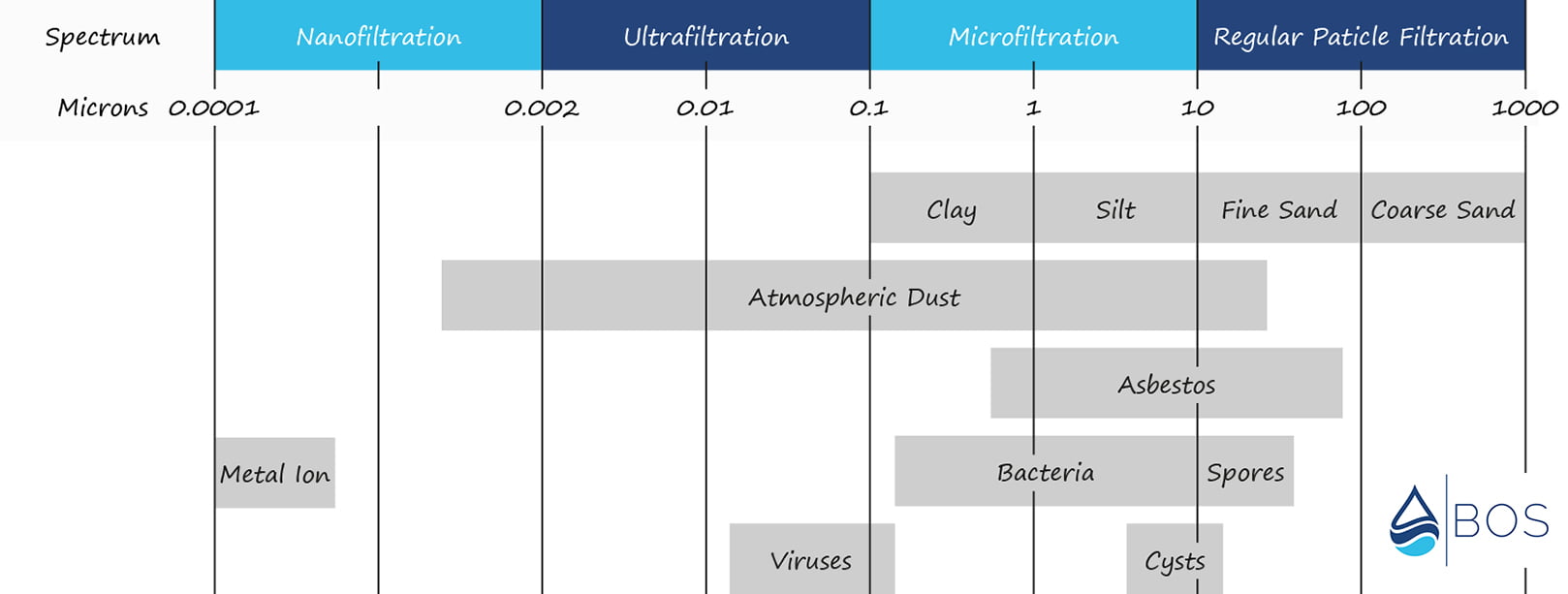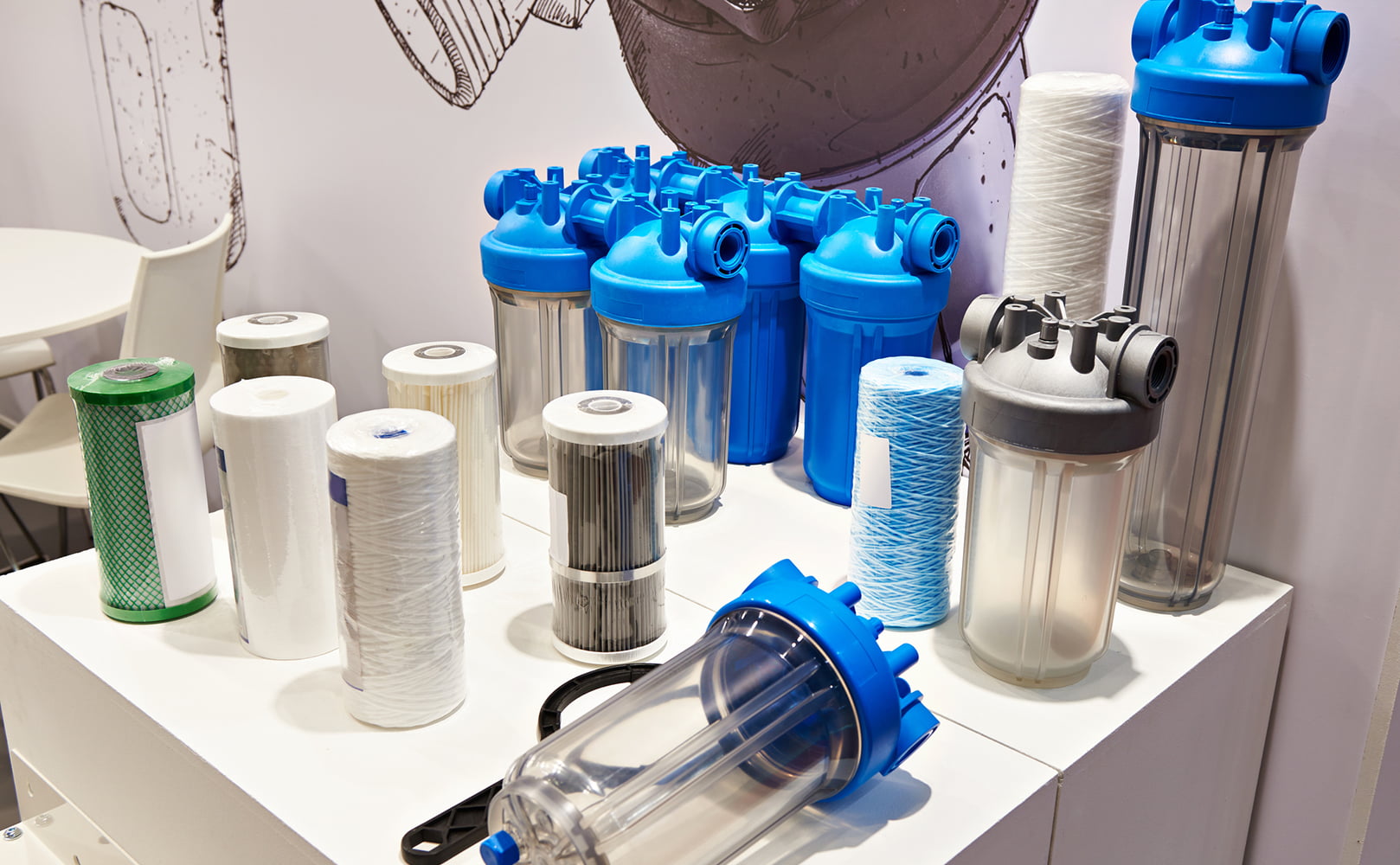Sediment Filter Sizes and Micron Ratings – What Do I Need?
Written by: Alexandra Uta // Last Updated: Sep 13, 2023
This page may contain affiliate links. If you buy a product or service through such a link we earn a commission at no extra cost to you. Learn more.
When shopping for sediment filters, you’ll find a variety of filter sizes and micron ratings.
Choosing the right size and rating is important if you want an effective sediment filter for your water supply and needs.
In this article, we’ll show you the most common sediment filter sizes and micron ratings, and explain how to decide which one you need.
Key Takeaways
- If you want a whole house water filter, you need a large-size sediment filter (2.5 x 20 inches, 4.5 x 10 inches, or ideally 4.5 x 20 inches).
- If you use a point-of-use filter, you need a small-size sediment filter (2.5 x 10 inches).
- Your choice of micron rating depends on the contaminants in your water. You’ll need to do a water test to learn more.
About Sediment Filter Sizes
There are four major sizes of water filter cartridges:
- 2.5 x 10 inches
- 2.5 x 20 inches
- 4.5 x 10 inches
- 4.5 x 20 inches (Big Blue)
Now, which one do you need? That depends on whether you want a whole house or point of use sediment filter.
Whole House Sediment Filter Sizes
Whole house filters are installed at the main point of water entry. If that describes your filter system, you need a 2.5 x 20, 4.5 x 10, or 4.5 x 20 filter cartridge size. Those are the practical sizes used for whole house water filters.
The two most commonly used sizes, however, are the 4.5″ x 10″ and 4.5″ x 20″ a.k.a. Big Blue.
POU Filter Sizes
For point-of-use (POU) sediment filters, you need a 2.5 x 10 inches filter cartridge.
POU filters are mainly installed on kitchen sinks.
Standardized vs Proprietary Filter Cartridge Sizes
We can also categorize filter cartridge sizes into standardized and proprietary.
The four sizes we mentioned earlier fall under standardized cartridge sizes. The biggest advantage of standardized cartridges is that they are interchangeable. This means that you can use filters from different brands in the same filter housing, and they’ll fit.
So with standardized filter sizes, you could save money by getting filters from cheaper manufacturers. Or you can experiment with different sediment filter types till you find the most effective one for your water supply.
Proprietary filter sizes, on the other hand, only work for one brand. An example is AquaTru filters; you can only use them for the AquaTru reverse osmosis system, and there are no alternatives for them. Proprietary filter sizes are mostly found in point-of-use filters.
About Sediment Filter Micron Ratings
Sediment filters also have micron ratings. Micron ratings define the size of contaminants that a filter can remove. We’ll dive into filter micron ratings to help you choose which one you need.
How Small Is a Micron?
A micron is 0.000001 of a meter. To put that in perspective, one hair strand is 70 microns thick. In other words, a micron is a very small unit of measurement, so it’s appropriate for measuring water contaminants and particles.
What’s a Micron Filter?
A micron filter is simply a water filter that has a micron rating. That means that the filter’s capacity to separate contaminants of a given size has been tested.
What Contaminants Does a Micron Filter Remove?
Here’s a diagram showing the type of contaminants different micron-rated sediment filters can remove.
Common Well Water Filter Micron Ratings
Here are common micron ratings you’ll find when shopping for well water filters:
- 100 Microns: Well water filters of 100 microns will remove large contaminants like sand and rust chips. They are ideal for heavily contaminated supplies.
- 50 Microns: 50-micron filters can remove slightly smaller particles like dust and visible sand particles.
- 25 Microns: This type can remove most granulose contaminants from water.
- 5 Microns: 5-micron filters go even further, removing silt and tiny sediments.
- 1 Micron: 1-micron filters remove the tiniest water contaminants, including certain microbes. They are usually fixed to the last part of a filter system to trap contaminants that are too small to be trapped by other filters.
- The Sub-Micron Level: Sub-micron level filters remove contaminants that are tinier than 1-micron (like bacteria and colloids), but they are rarely used in home water filtration. That’s because a 1-micron filter will already remove most contaminants in home water.
Nominal vs Absolute Micron Ratings
Micron ratings can be classified as either nominal or absolute. Nominal micron ratings describe the approximate size of contaminants that a sediment filter can block. They give you only an idea of a filter’s capacity.
Absolute micron ratings, on the other hand, specify the exact size of contaminants that a filter eliminates. For example, if the absolute rating of a sediment filter is 5 microns, it will remove all contaminants down to exactly 5 microns. Absolute ratings are precise and reliable.
Do I Need a POU or POE Sediment Filter?
If you only want to filter out sediments from specific water outlets, like kitchen sinks and drinking water taps, you only need a point-of-use filter.
But if you want to filter the water in your entire home, you need a point-of-entry filter. Using POE filters protects your water pipes, appliances, and equipment so they can last longer. You also get to use clean and safe water for everything, including bathing and laundry. If your water source contains a lot of sediments (well water, for example), it makes sense to use a POE filter.
What Size Should My Sediment Filter Be?
That depends on the following:
- Your type of filter system (whole house or point of use).
- The number of gallons per minute that you need.
Larger filter sizes allow for higher water flow. So if you use a whole house system and you need a lot of water gallons per minute, you should use a big filter — ideally 4.5 x 20 inches. Large sediment filters also tend to last longer.
If you use a POU filter and a few gallons of water only, you should use a smaller size: 4.5 x 10 inches.
How Many Microns Should the Filter Be?
Since micron ratings indicate the size of contaminants a filter can remove, your choice of micron filter is determined by the contaminants in your water. The only way you can know the size of what’s in your water is to test for contaminants.
Testing for Contaminants
You can test for contaminants by doing a water test at a certified laboratory. The test will reveal a list of contaminants present in your water and the concentration of each. That will help you decide how many microns your water filter should be.
With that said, keep in mind that a sediment filter with a smaller micron rating may decrease water flow noticeably. Thus, if you go too small, the water pressure throughout your home may drop.
If you have any thoughts about the question, what size sediment filter do I need or what micron sediment filter do I need, please don’t hesitate to leave a comment below!
Information provided on BOS is for educational purposes only. The products and services we review may not be right for your individual circumstances.
We adhere to strict editorial guidelines. Rest assured, the opinions expressed have not been provided, reviewed, or otherwise endorsed by our partners – they are unbiased, independent, and the author’s alone. We fact-check all content for accuracy. It is accurate as of the date posted and to the best of our knowledge.



